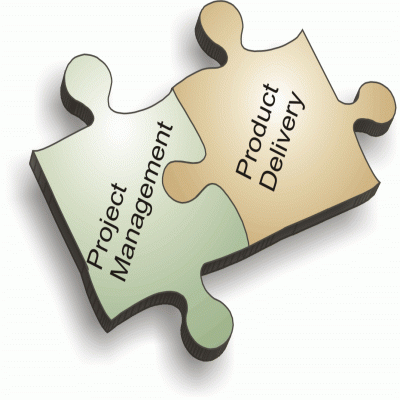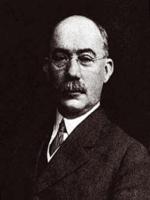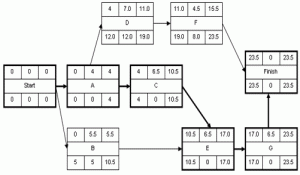Main menu
You are here
Project Management - Definition And History
Project management

Project managementis the discipline of planning, organizing, and managing resources to bring about the successful completion of specific project goals and objectives. It is sometimes conflated with program management, however technically a program is actually a higher level construct: a group of related and somehow interdependent projects.
What is a project and how is it distinguished from other activities that go on in a business? A project is happening when a number of people are organized to deliver a new product or service within a given timeframe and budget. So, producing a monthly report is not a project if the same report is produced month after month. However, if a new report needs to be designed with ideas from a range of senior managers and requiring technical work from information technology experts and all done within 15,000 dollars and by the next reporting period – well, that’s a project.
We see managing a well-run project as being similar to driving a racing car. Sure, you can try and get to the finish line as fast as you can by getting in the car and putting your foot flat to the board and leaving it there. If you did this, you will quickly find out that you will either crash into a barrier, rollover over on the first bend or burn out your engine or tyres. Many project managers we see approach projects just like that.
On the other hand, a disciplined racing car driver will go through a process. First, they will assess the track, then fine-tune the car to suit the track. Next, they will organize the pit crew and perform final checks on the car. Only then will they get in the car and drive. Even here there is a process that needs to be followed if success is to be achieved. First there is the warm up phase, then the car is paced carefully throughout most of the race, and finally comes the controlled dash for the finish line.
These project management phases are typically labeled the project initiation, planning, execution and, finally, the evaluation phase. As well as progressing through a number of project management phases, the job of managing a project consists of a number of project management disciplines. These disciplines involve the project manager in properly managing stakeholders and the project team, identifying and controlling project risks and project issues, managing project tasks and resources, controlling project changes and delivering on the expected quality outputs. Check out our Project Management Glossary for definitions of other common project management terms.
Project managementhas been practiced since early civilization. Until 1900 civil engineering projects were generally managed by creative architects and engineers themselves, among those for example Vitruvius (1st century BC), Christopher Wren (1632–1723) , Thomas Telford (1757-1834) and Isambard Kingdom Brunel (1806–1859) It was in the 1950s that organizations started to systematically apply project management tools and techniques to complex projects.
Henry Gantt (1861-1919), the father of planning and control techniques.

As a discipline, Project Management developed from several fields of application including construction, engineering, and defense activity. Two forefathers of project management are Henry Gantt, called the father of planning and control techniques, who is famous for his use of the Gantt chart as a project management tool; and Henri Fayol for his creation of the 5 management functions which form the foundation of the body of knowledge associated with project and program management. Both Gantt and Fayol were students of Frederick Winslow Taylor's theories of scientific management. His work is the forerunner to modern project management tools including work breakdown structure (WBS) and resource allocation.
The 1950s marked the beginning of the modern Project Management era. Project management became recognized as a distinct discipline arising from the management discipline. In the United States, prior to the 1950s, projects were managed on an ad hoc basis using mostly Gantt Charts, and informal techniques and tools. At that time, two mathematical project-scheduling models were developed. The "Critical Path Method" (CPM) was developed as a joint venture between DuPont Corporation and Remington Rand Corporation for managing plant maintenance projects. And the "Program Evaluation and Review Technique" or PERT, was developed by Booz-Allen & Hamilton as part of the United States Navy's (in conjunction with the Lockheed Corporation) Polaris missile submarine program; These mathematical techniques quickly spread into many private enterprises.
PERT network chartfor a seven-month project with five milestones
At the same time, as project-scheduling models were being developed, technology for project cost estimating, cost management, and engineering economics was evolving, with pioneering work by Hans Lang and others. In 1956, the American Association of Cost Engineers (now AACE International; the Association for the Advancement of Cost Engineering) was formed by early practitioners of project management and the associated specialties of planning and scheduling, cost estimating, and cost/schedule control (project control). AACE continued its pioneering work and in 2006 released the first integrated process for portfolio, program and project management (Total Cost Management Framework).

The International Project Management Association (IPMA) was founded in Europe in 1967, as a federation of several national project management associations. IPMA maintains its federal structure today and now includes member associations on every continent except Antarctica. IPMA offers a Four Level Certification program based on the IPMA Competence Baseline (ICB). The ICB covers technical competences, contextual competences, and behavioral competences.
In 1969, the Project Management Institute (PMI) was formed in the USA. PMI publishes A Guide to the Project Management Body of Knowledge (PMBOK Guide), which describes project management practices that are common to "most projects, most of the time." PMI also offers multiple certifications.
The AAPM American Academy of Project Management International Board of Standards 1996 was the first to institute post-graduate certifications such as the MPM Master Project Manager, PME Project Management E-Business, CEC Certified-Ecommerce Consultant, and CIPM Certified International project Manager. The AAPM also issues the post-graduate standards body of knowledge for executives.
Sources : www.wikipedia.org - www.businessperform.com

